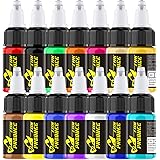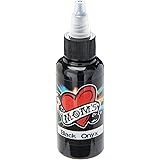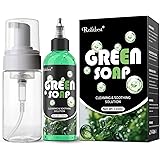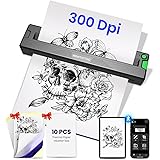So, you’re captivated by the art of tattooing and eager to learn, but the journey ahead seems shrouded in mystery. Perhaps you’re feeling overwhelmed, unsure where to begin, what supplies are truly essential, or how to navigate the vast ocean of techniques. Many aspiring artists share this dilemma, often getting lost in conflicting advice or accumulating unnecessary gear.
The good news is that starting your tattooing journey doesn’t have to be complicated. As discussed in the video above, a structured approach can demystify the process, equipping you with the right tools and a clear learning path. Instead of aimlessly browsing tutorials, imagine having a roadmap that guides you efficiently from a complete novice to a competent tattoo artist. This post will expand on those crucial insights, ensuring you have a solid foundation to begin.
Essential Tattoo Equipment for Beginners
One common pitfall for new tattoo artists is the belief that they need an arsenal of expensive equipment to get started. However, the truth is far simpler. Overcomplicating your initial setup can lead to unnecessary costs and confusion, diverting focus from the fundamental skill development. Your primary goal is to learn the craft, and for that, a lean, effective kit is paramount.
The Core Kit: What You Truly Need
When you’re just learning to tattoo, your equipment list should be concise and functional. You don’t need all the bells and whistles that experienced artists use. Think of it like learning to drive; you start with a basic car, not a Formula 1 racer. Essential items include basic cleaning supplies like tissues or wet wipes, which are crucial for maintaining a clean practice area.
Ink is another fundamental, and for learning, black and grey pigments are ideal. These colors simplify the palette, allowing you to focus on line work, depth, and contrast without the added complexity of color theory. This foundational approach ensures a strong grasp of core techniques applicable to any style later on. Plus, most foundational tattoo techniques are best learned and observed in monochrome.
Smart Choices: Inks, Needles & Machines
A selection of needles is non-negotiable for anyone looking to learn tattooing. You’ll need liners for creating crisp outlines, round shaders for smooth fills and soft shading, and magnums for broader shading and packing color. Using various sizes within each type—small, medium, and large—will help you develop a nuanced feel for how each needle configuration interacts with the practice surface. This builds crucial muscle memory and adaptability.
For a tattoo machine, a simple, reliable option is best. Many beginners find battery-powered machines excellent for their ease of use, eliminating the clutter and potential tangles of cables. These machines are often less intimidating to operate and less prone to setup errors, allowing you to concentrate solely on technique. A reliable power supply, whether integrated or separate, is equally vital to ensure consistent machine performance.
Practice Makes Perfect: Fake Skins and Ointment
Crucially, you should never practice on actual skin when learning to tattoo. High-quality fake skins are your canvas, offering a realistic feel without the ethical or health concerns of practicing on people. While there are many options on the market, investing in reputable brands provides a more authentic experience, mimicking the texture and resistance of real skin far better than cheaper alternatives.
Even though you’re not tattooing human skin, using ointment during practice is an excellent habit to cultivate. It keeps the practice area clean, reduces friction, and simulates real-world tattooing conditions. This simple step helps ingrain proper hygiene and application techniques, preparing you for professional practice down the line. It’s about building good habits from day one.
Setting Up Your Workspace Safely
Creating stencils is an integral part of the tattooing process, even for practice. It teaches precision and planning, ensuring your designs are accurately transferred before you even touch a machine. You’ll need stencil paper, a thermal copier (or manual tracing tools), and stencil solution. Wrapping your machine and workstation, including surfaces like an armrest, might seem excessive for fake skin practice, but it’s a critical safety measure in professional tattooing.
Practicing these wrapping habits from the outset ensures you develop the meticulousness required for sterile environments. An armrest, while not strictly necessary on day one, becomes highly valuable as you progress. It allows you to adjust angles and position your practice surface realistically, replicating the ergonomics of tattooing a client. This adaptability is key to preparing for complex designs on varied body parts.
The Structured Path to Learning Tattooing
The journey to becoming a skilled tattoo artist is often portrayed as a long, arduous path, traditionally through apprenticeships. However, securing a good apprenticeship can be incredibly challenging, leaving many aspiring artists searching for alternative learning methods. The problem with simply “jumping around on YouTube” is the lack of structure; you might learn a line work technique one day and then shading the next, without understanding the logical progression.
Why a Structured Curriculum is Key for Tattoo Training
Imagine trying to navigate a new city without a map or GPS. You might eventually get somewhere, but it would be inefficient and frustrating. Similarly, a structured curriculum acts as your “sat nav” for tattoo training, guiding you from point A to point B in the most efficient manner possible. This methodical approach ensures you build skills sequentially, mastering basics before moving to advanced techniques.
A curriculum-based approach is a hallmark of effective education across all disciplines, from high school to university. It provides a logical flow, reinforcing concepts and building competence. This structured learning is often absent in the broader tattoo industry, which the video highlights as a significant missing piece. Without it, beginners risk developing bad habits or feeling perpetually stuck.
From Holding the Machine to Mastering Lines
The initial steps in learning to tattoo focus on the absolute fundamentals. This begins with simply getting comfortable holding the tattoo machine and understanding its interaction with the practice surface. Developing control over hand-machine speed and consistent pressure is paramount. This phase also involves understanding basic tattoo theory, which underpins every technique.
Once machine control feels natural, the next progression is learning line work. Rather than tackling complex designs immediately, you start with the simplest form: a straight line. This drill-based practice reveals every wobble and inconsistency, forcing rapid improvement. Subsequently, you move to curved lines and circles, gradually building precision. This dedication to foundational line work ensures your outlines are clean and confident, a cornerstone of any good tattoo.
Progressive Tattoo Techniques: Shading and Beyond
After mastering line work through dedicated drills and basic designs, the curriculum moves into the nuances of shading. This phase often begins with understanding the theory behind light and shadow, and how to create varying depths of tone. Pointillism, or dot work, serves as an excellent entry point, teaching controlled pigment application to build subtle gradients.
Following dot work, you progress to more traditional shading methods using different needles. Learning whip shading, brush shading, and packing techniques with a round shader needle is crucial. Each method produces distinct effects, and practicing them extensively through drills builds the muscle memory needed for smooth transitions and consistent saturation. This sequential learning ensures you fully grasp each technique before combining them into more complex pieces.
The Power of Repetition: Drills for Rapid Improvement
The repeated practice of drills is central to rapid skill acquisition in tattooing. It’s a method designed to expose every mistake, making you acutely aware of areas needing improvement. This almost forces you to refine your technique at an accelerated pace, much like a musician practicing scales. While the initial results might seem imperfect—those wobbly lines a stark reminder of your beginner status—this feedback loop is invaluable.
Drills strip away the aesthetic distractions of a finished design, allowing you to focus purely on mechanical execution. This intensive, repetitive practice is what builds muscle memory, transforming conscious effort into subconscious competence. Once you’ve honed these foundational skills, you can then apply them to simple designs, combining line work and dot work to create cohesive, visually appealing pieces. This iterative process is the engine of quick, tangible progress.
Fast-Tracking Your Tattooing Skills: The 30-Day Blueprint
Many experienced artists claim it takes “years” to become good at tattooing, and while mastery certainly requires a lifetime of dedication, achieving competence can happen much faster. Think of it like learning to swim; you can go from never having been in the water to being able to swim confidently in 30 days, even if you won’t be an Olympic athlete. This 30-day blueprint aims to get you to the “swimming” stage of tattooing.
Building Muscle Memory and Competence
The core of this accelerated learning involves consistent repetition across various techniques. After round shader methods, you then tackle shading with magnum needles, which are fantastic for covering larger areas and creating smooth gradients. Again, this involves dedicated drills followed by applying these new skills to more complex designs. By this point, you’ll have a solid understanding of line work, dot work, and multiple shading methods, utilizing different needle types effectively.
This progressive, hands-on approach takes you from struggling with basic lines to competently executing a range of tattoo designs. The goal isn’t immediate world-class artistry, but rather robust competence and confidence. You’ll gain a foundational skill set that serves as a springboard for continued growth. The journey of mastery is long, but becoming proficient enough to create good designs can be achieved efficiently through structured, repetitive learning.
The Value of Community Support
Beyond the technical skills, finding the right community is vital for long-term growth and motivation. Many online tattoo communities are unfortunately known for negativity and judgment. However, supportive communities exist, comprising nearly 100,000 like-minded individuals, all focused on learning and mutual encouragement. This kind of environment fosters growth, allowing you to share progress, ask questions, and receive constructive feedback without fear of ridicule.
This positive peer network can be an invaluable resource, providing motivation and practical advice that complements structured learning. It reinforces the idea that you are not alone on this journey. Being part of a community that champions collective success over individual competition creates a powerful support system, something often overlooked but crucial for sustained progress in any challenging field.
Continuing Your Tattoo Education
While the initial 30-day course provides a comprehensive foundation, it’s just the beginning. The principles of progressive learning extend into more advanced training, which can take anywhere from six months to a year to complete. This next phase delves into more intricate designs, advanced shading, color theory, and potentially even portraiture, building upon the solid base you’ve established. The ultimate goal is to equip you with the skills to create truly world-class tattoos.
If you’re ready to take the next step and access a full, structured curriculum that covers everything discussed here, including detailed equipment lists and guided drills, the creator of the video offers a completely free course. All the necessary links and information will be provided directly to you upon signing up with your email. This includes immediate access to the learning materials and the supportive community, giving you everything you need to start tattooing effectively and confidently.











